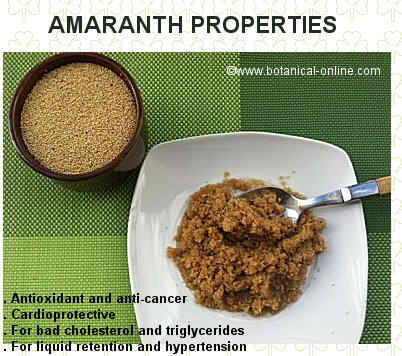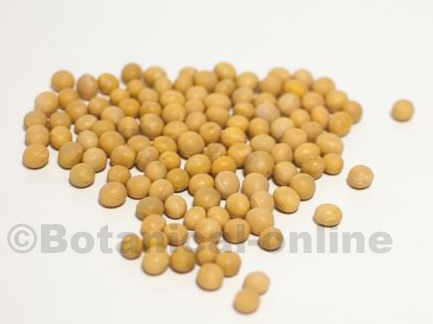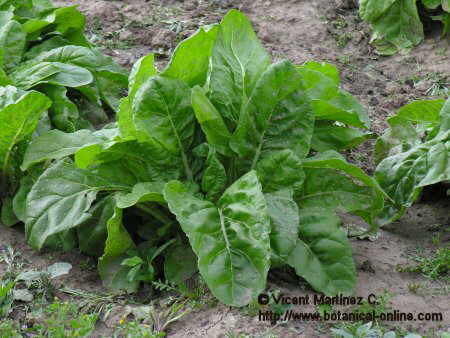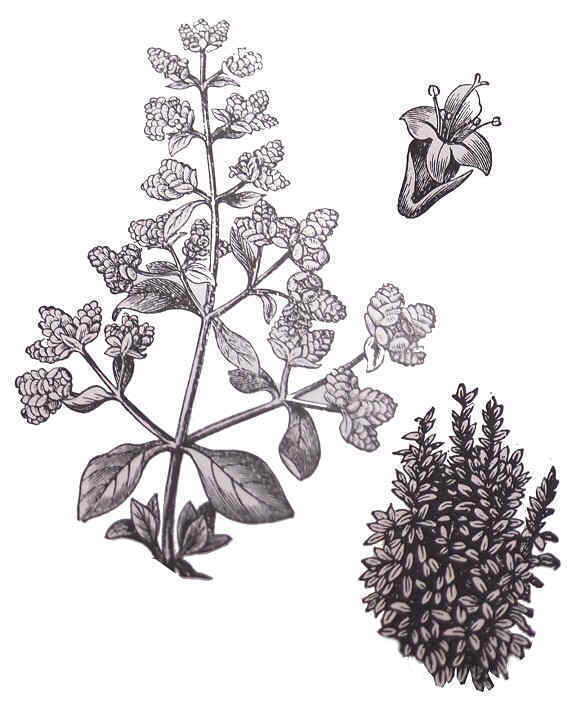Contents
MEDICINAL PROPERTIES OF AMARANTH
Amaranth for cancer
The amaranth seed is a noteworthy food for having several components with anticancer effects that are still under study by many researchers.

- Among the anticancer agents squalene stands out: Squalene is an organic acid with antioxidant and anticancer effects is demonstrated. Squalene can be found in amaranth seed. This substance was known in the ancient Japanese Pharmacopoeia, then called “Samedawa” which means “cure-all.” Indeed, the inhabitants of the Japanese peninsula used squalene shark oil for a wide variety of illnesses, including, for example, constipation or cancer.
The common source of squalene is shark oil, containing 1% of this substance, and this source is the one that gives the name to this oil, since it is derived from the Latin Squalidae, that’s to say, the biological family name of sharks. Olive oil and palm oil contain about 0.5-0.8%.
Scientific studies on anticancer properties of amaranth
To go further, scientists Theresa J. And Harold L. Smith Newmark, say that the protective or anticarcinogenic effect that is associated with all polyunsaturated oils could be attributed to the increased amount of squalene faced to other saturated fats, a premise supported by other experimental studies in animals. Applied both, topical and systemic, squalene has been proved to have anti-cancer effects.. Vegetable oil of amaranths is the richest vegetal oil in squalene (see properties in the listing below).
Besides squalene, the anticancer effect of beta-sitosterol, a plant sterol (phytosterol) present in many vegetables such as amaranth which also have anticancer properties described.
In addition, the Laboratory of Proteomics and Gene Expression, Division of Potosinian Molecular Biology Institute of Scientific and Technological Research (IPICYT, Mexico) is investigating a third anticancer component of amaranth. Researchers have described the effects of this protein as a regulator of the uncontrolled proliferation of cancer cells.
*Related article in new window: Effects on health of fats we consume.
Prevention and treatment of cardiovascular diseases
Amaranth is a heart-healthy food because of its slow carbohydrate absorption. Its fat is rich in essential fatty acids, fiber, calcium and magnesium.
Amaranth grain has a higher percentage of oil that that of cereals. Beside in the composition of these oils highlights the presence of oleic acid and linoleic acid. This type of fat has a cardioprotective role. Although the benefits of Omega 6 are well-known, amaranth oil (and amaranth seeds to a lesser extent) contain other potent natural antioxidants such as squalene. It is estimated that the antioxidant activity of this substance is three times the antioxidant power of vitamin C.
Cardioprotective properties of amaranth are so well-known that Functional Foods Center at Dallas (USA), Voronezh State University (Russia) and the State Institute of Nutrition of the Russian Academy of Medical Sciences in Moscow (Russia), have published many studies that demonstrate the value of the leaves, grains and oil of amaranth in the prevention and treatment of cardiovascular diseases. In one study, it was shown that a balanced consumption of amaranth oil, along with a balanced diet, decreased levels of total cholesterol, triglycerides and LDL (“bad cholesterol”).
Its high content in calcium, fiber and potassium of the leaves and grains are beneficial for fluid retention, for blood vessels and for the overall health of the body. It can also be very positive in the natural treatment of hypertension.
Amaranth contains highly nutritious grain for celiac and vegetarian diets
When the American natives showed that amaranth had been the staple diet for centuries, you could sense the nutritional quality of this seed. >Indeed, amaranth is a highly nutritious pseudocereal both for healthy energy intake coming mostly from starch and its protein content in amino acids.
Amaranth contains the amino acid lysine, deficient in all cereals and methionine, limiting amino acid in legumes. However, it is deficient in the amino acid tryptophan, Very abundant in the food sources mentioned above.
For these reasons amaranth can be perfectly combined with legumes and cereals, because each one of them complements the biological value of protein of others, resulting in a mixture of proteins of high biological value.
This feature is particularly important in diets for people with celiac disease, whose nutrition may be deficient in amino acids and plant protein because they have to restrict some food.
Other uses of amaranth
From the red variety of amaranth betalaine is extracted. Betaine yields a dye of the same color. This substance is given special importance because, unlike other dyes, it is not harmful. It is commonly used in the food industry as a color additive.
Amaranth is also used for the manufacture of cosmetics and biodegradable plastics.
![]() More information on amaranth
More information on amaranth








